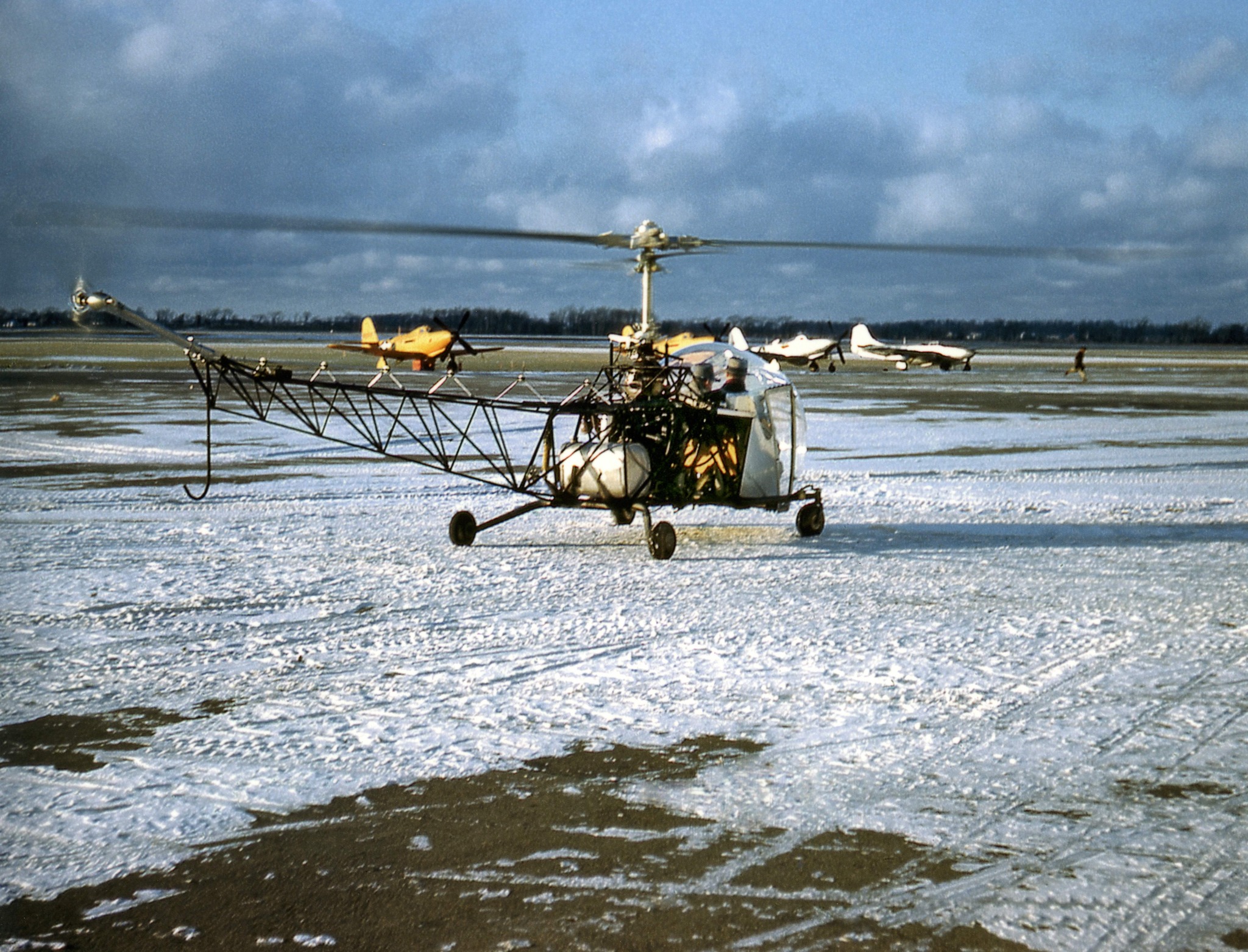

The Civil Aviation Administration (C.A.A.), predecessor of the Federal Aviation Administration, had never certified a helicopter, so Bell worked with government officials to develop civil certification standards. The Bell 47 received the C.A.A. Type Certificate H-1 on 8 March 1946 and the first helicopter’s registration was changed to NC1H.
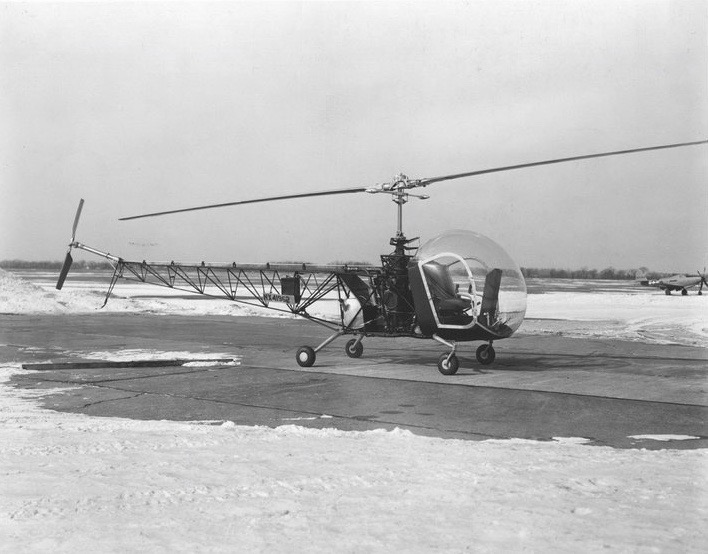
The Bell 47 series was constructed of a welded tubular steel airframe with a sheet metal cockpit and a characteristic plexiglas bubble. In the original configuration, it had a four-point wheeled landing gear, but this was soon replaced with a tubular skid arrangement. It was a two-place aircraft with dual flight controls.
The first Bell Model 47 had an overall length (with rotors turning) of 39 feet, 7½ inches (12.078 meters). The main rotor diameter was 33 feet, 7 inches (10.236 meters). The length of the fuselage, from the front of the plexiglass bubble canopy to the trailing edge of the tail rotor disc, was 29 feet, 3½ inches (8.928 meters). The tail rotor had a diameter of 5 feet, 5 inches (1.676 meters). The helicopter’s height, to the top of the main rotor mast, was 9 feet, 2-7/16 inches (2.805 meters).
NC1H had an empty weight of 1,393 pounds (632 kilograms). Its gross weight was 2,100 pounds (953 kilograms).
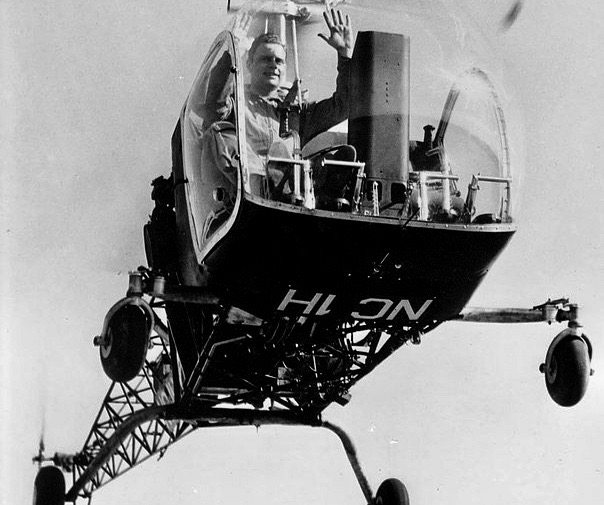
The Bell 47’s main rotor is a two-bladed, under-slung, semi-rigid assembly that would be a characteristic of helicopters built by Bell for decades. The blades were constructed of laminated wood, and covered with fabric. A stabilizer bar was placed below the hub and linked to the flight controls through hydraulic dampers. This made for a very stable aircraft. The main rotor turns counter-clockwise, as seen from above. (The advancing blade is on the right.) The tail rotor is positioned on the right side of the tail boom in a tractor configuration. It rotates counter-clockwise as seen from the helicopter’s left. (The advancing blade is above the axis of rotation.)
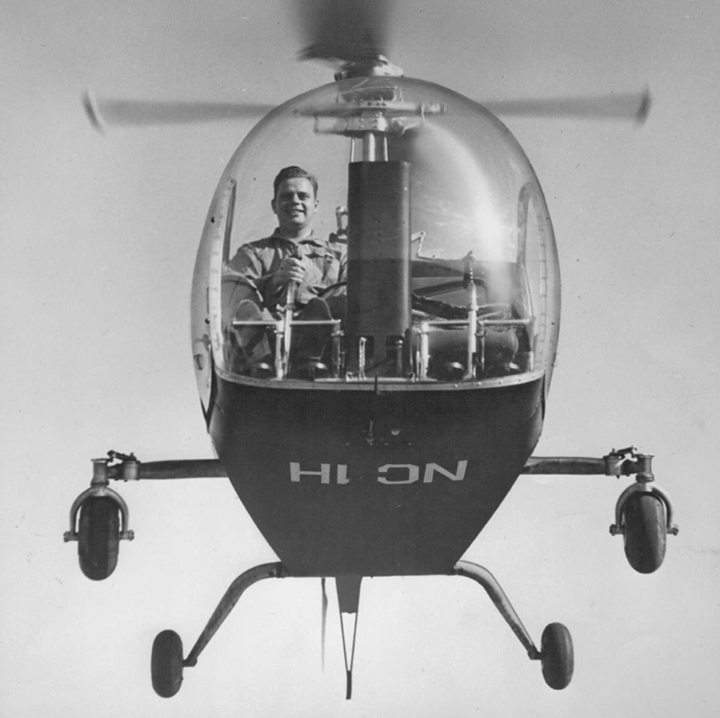

The new helicopter had a cruise speed of 75 miles per hour (121 kilometers per hour) and a maximum speed (VNE) of 80 miles per hour (129 kilometers per hour). NC1H had a service ceiling of 11,400 feet (3,475 meters).
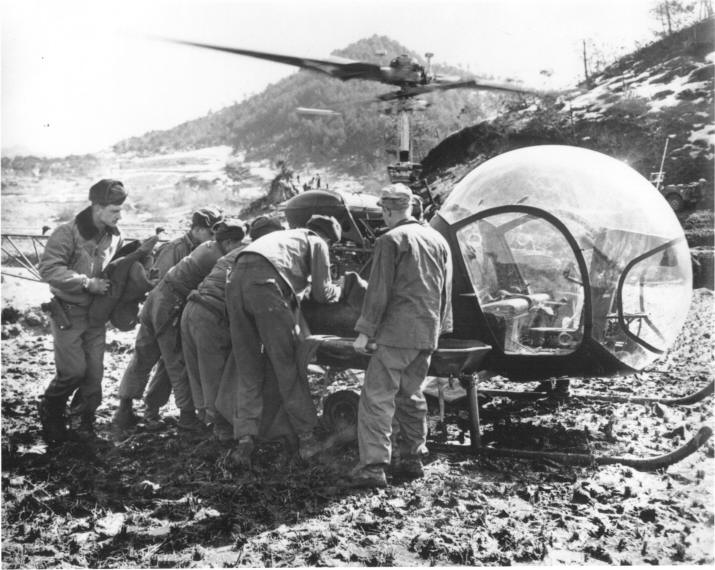
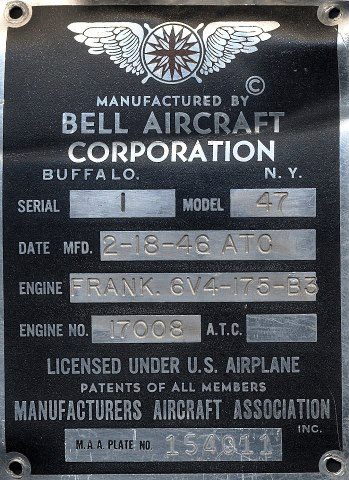
The Bell 47 was produced at the plant in New York, and later at Fort Worth, Texas. It was steadily improved and remained in production until 1974. In military service the Model 47 was designated H-13 Sioux, (Army and Air Force), HTL (Navy) and HUG (Coast Guard). The helicopter was also built under license by Agusta, Kawasaki and Westland. More than 7,000 were built worldwide and it is believed that about 10% of those remain in service.
In 2010, the type certificates for all Bell 47 models was transferred to Scott’s Helicopter Service, Le Sueur, Minnesota, which continues to manufacture parts and complete helicopters.
After certification testing and demonstrations, NC1H was one of two Bell 47s used for flight training. The first Bell 47, s/n 1, crashed at Niagara Falls Airport, 3 April 1946.
While hovering out of ground effect, a student inadvertently oversped the main rotor by decreasing collective pitch when he had intended to increase it. The main rotor hub separated and the helicopter dropped to the ground. Both the student and instructor were injured. Damage to NC1H was extensive and the helicopter was scrapped. The registration, NC1H, was reassigned to Bell 47 s/n 11.
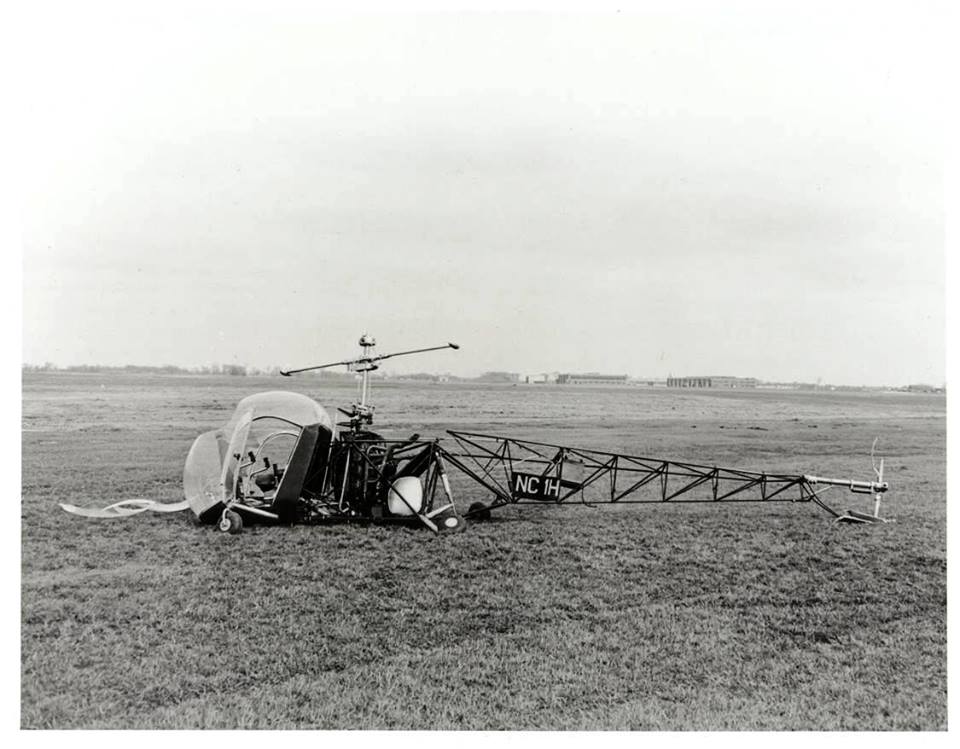
© 2018, Bryan R. Swopes
Hello,
I was wondering if it is OK to use the photos in this archive for print and web publications?
Thank you,
Megan
To the best of my knowledge, most of these photographs are in the public domain, so feel free. Many, I have found on the Internet with no indication as to the source, so sometimes it’s just a best guess. Others are used with the specific authorization of the photographers. Refer to the attribution in parentheses following the caption. (p.s.: I have several Alpha jackets. They’re my favorites.)
NC-1H serial number 1 was originally designated as NX41962 prior to becoming certified by the CAA and re-designated as NC-1H.
The official roll out of the helicopter was on 8
December 1945.
First flight of Model 47 Ship 1 NX41962 was on December 27, 1945 by Arthur M. Young . The flight was approximately 25 minutes. Information from the Niagara Aerospace Museum files.
Thank you.
There was a roumer years ago that the original NC 1H was found in a shed along with the data plate. Ended up in Canada? Viking Helicopters?
There is a claim that NC-1H serial number 11 was located in Canada. A written report from a former Bell employee of 45 years states that serial 11 with was re-registered as NC-1H after the original NC-1H serial number 1 crashed. Serial number 11 was destroyed in an accident. The Niagara Aerospace Museum has the data plate, log books, and other documents from NC-1H serial number 11.
The report details that Bell sent 2 complete early model 47’s to Canada that were used in the training facility. They were never airworthy or had serial numbers, strictly mock ups for mechanics and pilot training.
The mock ups and other material were sent to Canada to promote helicopter mechanics training after the Bell training facility was upgraded upon the introduction of the Bell Model 47D.
Paul D. Faltyn – Retired Curator / Niagara Aerospace Museum
Thank you, Paul.
I had the interesting experience of flying in the right seat of a H-13 occasionally as a US Army photographer for photo missions in South Korea. 1968-1969. Returning to the Army airfield in the Han river late one afternoon, I saw the pilot tap a light which had just illuminated on the panel. When I looked closer, it was the transmission temp (or perhaps “pressure” light). He said to me over the intercom “It’s probably just an indication”. We were flying over a river valley full of rice paddies and were 20 minutes from the airfield. We made it ok and landed just after sunset. Now, after 35 years as a professional pilot, I realize how scared I should have been.
Great history gentlemen
Thanks for sharing